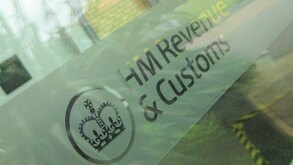
|
Magdalena Marciniak |
There has been a growing interest in how tax authorities deal with transfer pricing issues. Both taxpayers and tax authorities have been paying special attention to this following the OECD's recommendations to tackle profit shifting to low or no-tax jurisdictions in its BEPS Action Plan.
On June 22 2016, the Polish Ministry of Finance shed some light on the tax authorities' transfer pricing approach and measures planned by the tax authorities that ultimately aim to protect the Polish tax base.
According to Finance Vice Minister Wiesław Jasiński's statement, 170 transfer pricing audits were launched in the first half of 2016, which is much more than in the previous years. Also, verification proceedings were started for 230 entities and their outcome may prompt additional audits.
The finance ministry also published the outcomes of all tax audits conducted in the first half of 2016. Jasiński underlined the meaning of transfer pricing audits and updated the number of controls performed in the first half of 2016. According to the update, 222 transfer pricing controls were initiated, i.e. up by 44% since December 2015. Compared to 2015, 50% more entities were tax audited. With 92 audits concluded, the figures revealed that tax liabilities of over PLN 60 million ($15.7 million) were revealed and the amount of declared losses were reduced by over PLN 440 million. In regards to tax planning, tax liabilities of PLN 560 million were defined and declared losses reduced by PLN 27 million. In seven cases, audited companies themselves adjusted their tax declarations by about PLN 40 million.
It is also worth noting that the tax audit department within the Polish tax authority has increased its staffing levels. For example, in Warsaw, 20 additional employees have been hired. The priority for the next few years is to continue increasing the number of experts who would be responsible for performing efficient transfer pricing audits. These audits are usually time-consuming and complicated (a number of economic and business matters must be analysed), so it is crucial to have tax inspectors with adequate knowledge and expertise.
Additionally, the finance ministry has indicated that transfer pricing audits are usually conducted on large companies with a turnover exceeding PLN 1 billion in a fiscal year. Tax authorities regard such businesses as the best target group since there are only a few of them, representing just 0.3% of all registered businesses. However, this group generates approximately 30% of VAT revenues and 40% of corporate income tax revenues. Any extra tax charges identified from audits of these businesses may boost budget revenues significantly more than audits of smaller companies.
Furthermore, tax audits are planned much more often than previously. It means that intragroup transactions will be audited more frequently, i.e. at intervals that limit the ability of the examined entity to avoid taxation. According to the finance ministry's June announcement, transfer pricing audits will be performed no less than every five years.
The message conveyed is that tax authorities will focus in the future on auditing a narrower group of taxpayers, but those with the highest turnover. Tax audits within these entities will also be conducted much more often and with greater accuracy.
Large companies should therefore analyse their intragroup transactions and focus on providing the arm's length remuneration for these transactions. In order to confirm the accuracy of intercompany settlements, the largest taxpayers should not only prepare transfer pricing documentation, but also consider conducting benchmarking studies. Although this is not compulsory yet, companies with revenues or expenses from the previous fiscal year exceeding €10 million ($11.2 million) will have to meet this required from January 1 2017. In practice this means that all entities identified by the finance ministry as "large" (i.e. with turnover exceeding PLN 1 billion) will be obliged to prepare benchmarking studies.
With the above in mind, companies are advised to be prepared for a visit from the tax inspectors.
Magdalena Marciniak (magdalena.marciniak@mddp.pl)
MDDP
Tel. +48 22 322 68 88
Website: www.mddp.pl









